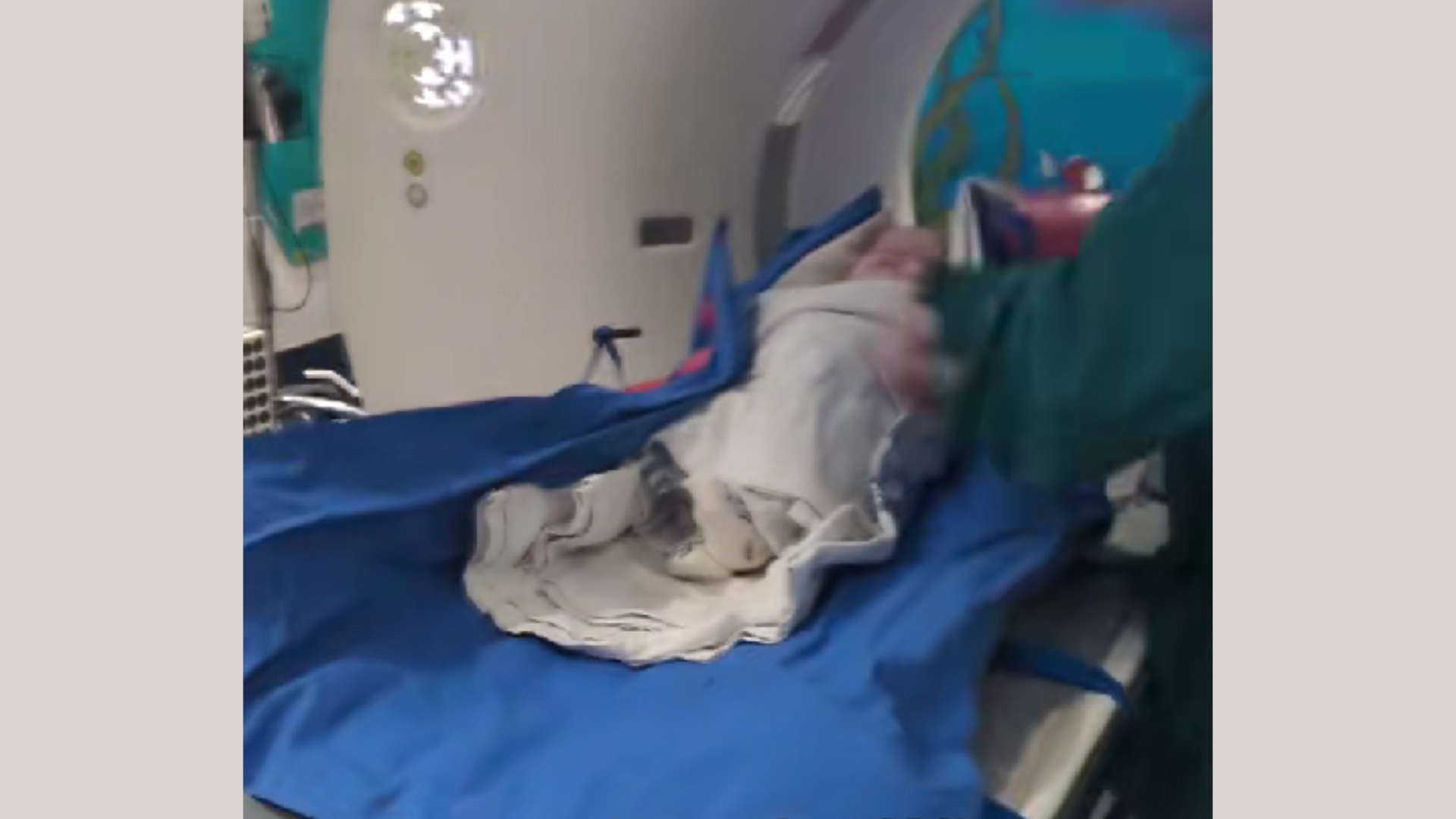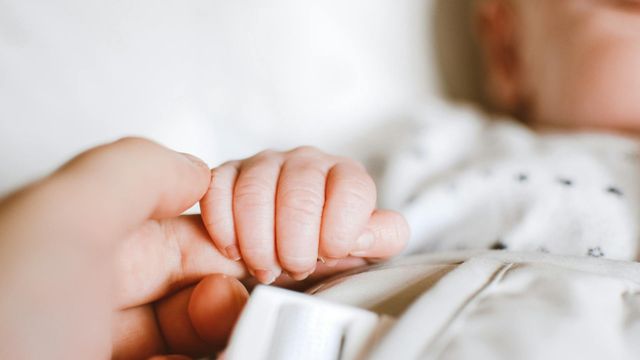When Can Babies Sleep on Their Stomach?

Sleep — or lack of it — is probably on your mind if you’ve got a newborn in the house. When it comes to your newborn’s bedtime, though, the medical community agrees: Putting your baby to sleep on their back is the only safe way to sleep. But why is back sleeping so important? And when can you let them flip to their tummy?
Pediatrician Matthew Badgett, MD, explains baby sleep safety and when it’s OK to put them to sleep on their stomach.
Why can’t babies sleep on their stomachs?
Some babies refuse to sleep when you place them on their backs. Why do you have to put them on their back, anyway?
There are several important reasons to stay the course and keep your infant on their back. Risks of tummy sleeping include:
Sudden infant death syndrome (SIDS)
This reason is a biggie: Putting babies on their stomachs dramatically raises their risk of sudden infant death syndrome (SIDS). Also called sudden unexplained infant death (SUID), SIDS is the unexplained death of an otherwise healthy infant under 1 year of age.
“Decades earlier, the common advice was to put babies down on their bellies,” says Dr. Badgett. “So, many new parents get pushback from grandparents who say, ‘I put you to sleep on your stomach, and you’re fine.’ But babies did die back then from SIDS and tummy sleeping. We know that now.”
A large body of research shows that tummy sleeping is linked to SIDS. Once public health experts began promoting the Back to Sleep campaign in the 1990s, SIDS deaths plummeted by up to 83%.
While SIDS is rare today, don’t take it lightly.
“Putting your baby down on their back is the best way to lower your baby’s risk of SIDS,” stresses Dr. Badgett. “It’s hard when you’re tired and your baby prefers to be on their stomach. But it’s not worth the risk.”
Overheating
If your baby is on their belly, their warm breath could collect around their face and head. It’s easy for your baby to get too hot, and they can’t reposition themselves to cool off.
“Young infants who sleep on their stomachs are at risk for hyperthermia, or a high body temperature,” warns Dr. Badgett. “Studies show that babies who get too hot have a higher risk of SIDS.”
Suffocation
Speaking of baby’s breath, babies who sleep on their stomachs may be more likely to suffocate.
“When humans breathe out, they release air higher in carbon dioxide,” says Dr. Badgett. “A baby sleeping on their belly inhales some of their expired air, which has too much carbon dioxide and too little oxygen.”
Not enough oxygen, known as hypoxia, and too much carbon dioxide, or hypercapnia, are life-threatening and known risk factors for SIDS. When your baby is on their back, their expired air floats away from them so they can easily breathe in the oxygen they need.
Keep any blankets, pillows, stuffed animals or bumpers out of their crib or bassinet. Any of these objects can lead to suffocation, so wait until your child is 12 months old before you use them.
Choking
All babies regurgitate (or spit up) some of their breast milk or formula occasionally. In almost all cases, spit-up is not a cause for alarm. These little messes happen because your baby’s digestive system hasn’t yet learned to keep food and liquids down.
But spit-up can become a danger if your baby sleeps on their tummy.
“If a baby is on their belly and spits up, their face could be stuck in a puddle of regurgitated milk or formula,” explains Dr. Badgett. “They risk aspirating, or breathing in, the milk and choking. Unfortunately, some people believe that back sleeping can cause a baby to choke on spit-up, when the opposite is true.”
How do I know if my baby is ready for stomach sleeping?
Babies can begin tummy sleeping when they’ve mastered the art of rolling over.
“Some babies will be able to roll from back to stomach and back again long before 1 year of age. Most infants can roll both ways by 6 months of age,” says Dr. Badgett. “If your baby can easily roll both ways, stomach sleeping is safe. At that point, the risk of SIDS drops significantly.”
The ability to roll both ways — not just one — is key. Some babies can roll from back to belly before they can move from belly to back. If this is your little one, back sleeping is still essential. If you see them rolling onto their tummy (thanks, baby monitor), gently return them to their back.
Want to help your baby build the strength they need to roll over? Give them plenty of tummy time while they’re awake. Tummy time also helps avoid flat head syndrome, which can develop when babies spend too much time on their backs.
What if my baby doesn’t like sleeping on their back?
Many newborns and infants prefer the feeling of being on their tummies. And newborns have a startle reflex, known as the Moro reflex, that can wake them up more easily when they’re on their backs.
If your baby isn’t keen on back sleeping, you don’t have to endure months of sleepless nights. Use these expert-approved tricks to help them feel more secure:
- Swaddle. “Most newborns are happier in a swaddle,” shares Dr. Badgett. “It feels more like being in the womb.” Use a thin swaddle blanket to make a snug baby burrito. But watch your baby: When they can roll onto their side or stomach, it’s time to stop swaddling.
- Try white noise. Turn on a fan or white noise machine to drown out sounds that could startle your baby awake. “Preventing the startle reflex as much as possible can make it easier for your baby to fall asleep and stay asleep on their back,” says Dr. Badgett.
- Use a pacifier. Many babies find pacifiers soothing. Some evidence suggests that, when paired with back sleeping, pacifier use can further reduce the risk of SIDS.
Partner with your medical provider
Caring for an infant is a lot of work. But you’re not alone. Your healthcare team is here to answer your questions about sleep, feeding and any other concerns you have.
Tell your provider if you need support — or you’re exhausted beyond belief. They can give you advice and provide resources to help. And if your baby isn’t sleeping much now, remember that this phase will pass. Before you know it, that little bundle will be rolling and crawling, and concerns about SIDS will be behind you.
link




:max_bytes(150000):strip_icc()/asian-sick-little-girl-lying-in-bed-with-a-high-fever-952683074-5b5b784046e0fb005027ca13.jpg)

